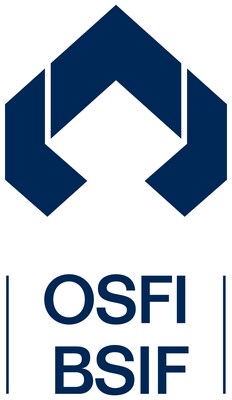Superintendent Peter Routledge participates in a fireside chat at Morningstar DBRS
TORONTO, Oct. 31, 2025 /CNW/ -
Check against delivery
Superintendent of Financial Institutions Peter Routledge, participated virtually in a fireside chat at the Morningstar DBRS Credit Outlook on October 30. He spoke about OSFI's priorities, competitiveness, and innovation in Canada's financial system.
Moderator:
Q1. Acceptance for cryptocurrency is increasing rapidly in the U.S., with the Trump administration aiming to become a global leader in the space and the large U.S. banks showing signs of increasing adoption. What are OSFI's thoughts on cryptocurrency and what it might mean for the Canadian FI sector?
Superintendent Peter Routledge:
- We all know new technologies can take off with lightning speed once adoption begins. That's what we're seeing in the U.S. right now with digital assets, now that they've signed the GENIUS Act into law.
- We are starting to see stablecoin innovation emerge in Canada.
- It's important to remember: stablecoins are not really "assets" — they are liabilities. They are promises that have to be backed, and those promises carry prudential risks. Some products may be inside the regulated perimeter, others outside it. It is far better for resilience if those innovations are developed inside a regulated system.
- For OSFI, our role is not to direct institution on financial innovations. Our role is to promote safety and soundness, while allowing federally regulated banks to compete and take reasonable risks.
- Our risk appetite is, by design, cautious. But we need to keep the door open to innovation. If Canada falls behind in financial sector innovation, we risk falling behind economically. The better path is responsible innovation inside the regulated perimeter.
Moderator:
Q2.Could you give an overview of OSFI's principles for responsible AI in finance? How can banks and insurance companies adopt AI while managing risks, and how does OSFI use AI in their decision making?
Superintendent Peter Routledge:
- AI has the potential to be a productivity multiplier, both for the institutions we regulate and for OSFI itself. Internally, we're using data and AI tools in targeted use cases. I often compare AI to the internet—it will change how financial services operate, and the pace of adoption will be rapid.
- For financial institutions, AI carries potential risks. A poorly managed AI model, especially one used in critical decision-making, could even contribute to an institution's failure. That's why governance, oversight, and accountability are so important.
- My guiding principle is to 'first, do no harm.' We will allow institutions the space to innovate, while remaining vigilant in identifying and addressing material risks as they emerge.
- We're engaging with the Global Risk Institute and industry through the second Financial Industry Forum on Artificial Intelligence (FIFAI). That dialogue is helping shape principles for responsible AI use, including transparency, fairness, security, and accountability.
- The FIFAI discussions then led to the development of the EDGE principles, Explainability, Data, Governance and Ethics:
- Explainability: Financial institutions must be able to explain how an AI model arrives at its decisions. This is crucial for building trust with customers and stakeholders.
- Data: AI models require high-quality, reliable, and well-governed data to produce trustworthy and accurate results. The integrity of the underlying data is fundamental to a responsible AI system.
- Governance: Institutions need a robust governance framework to manage the risks and responsibilities associated with AI. This includes clear roles, accountability, and oversight throughout the AI lifecycle.
- Ethics: Financial institutions must consider the broader societal impacts of their AI systems, addressing issues such as transparency, privacy, bias, and fairness.
Moderator:
Q3. We are seeing easing banking regulations in the U.S. and ongoing delays in multiple jurisdictions with the adoption of the Basel III reforms. Amid the ongoing trade war and these variances among jurisdictions, how does OSFI weigh regulatory prudence with competitive balance for the banks in its decision making?
Superintendent Peter Routledge:
- Over the last 15 years, OSFI has built enduring resilience into Canada's financial system.
- As you know, earlier this year OSFI deferred increases in the Basel III output floor. This ensures Canadian banks can compete effectively with peers in other jurisdictions without weakening safeguards.
- In November we will launch in consultation on draft Capital Adequacy Requirements (CAR) Guideline. We will be looking at relative risk-weightings for banks and the capital treatment of certain types of loans to encourage business lending by banks in support of the economy.
Moderator:
Q4. Ongoing trade tensions with the U.S., coupled with broadly loosening financial regulations for U.S. firms, threaten to undermine the competitive positioning of Canadian-based global insurers. Does OSFI take into consideration insurers' ability to effectively compete outside of Canada when designing capital and other rules and guidance (such as those relating to private assets)?
Superintendent Peter Routledge:
- Of course we do take that into consideration. Parliament has been clear in OSFI's mandate: we are to protect depositors, creditors and policyholders while allowing financial institutions to compete effectively and take reasonable risks.
- That balance matters in a global market. Canadian life insurers compete internationally, and our rules need to reflect that reality.
- In July 2025, for example, OSFI reduced capital requirements for qualifying infrastructure debt and equity held by life insurers to encourage investments in Canadian-based infrastructure projects. This adjustment freed up capital for investment without compromising resilience.
- We are also postponing the next revision of the LICAT Guideline from 2027 to a later date (post 2028).
- After the successful implementation of LICAT 2023 and LICAT 2025, we have determined that maintaining the current stability of the LICAT framework will support capital regulatory management and predictability.
- We continue to engage with insurers about the treatment of private assets and other exposures, ensuring that our framework aligns with international standards while remaining proportionate to Canada's needs.
Moderator:
Q5. OSFI implemented loan-to-income rules earlier this year along with the existing mortgage stress test (MQR). There has been discussion that the LTI will replace the mortgage stress test. Can you comment on what drove the implementation of the LTI and whether you see this eventually replacing the mortgage stress test? What is OSFI observing with renewals in the still elevated interest rate environment? More broadly, are there other areas that OSFI is exploring to help the federal government solve the housing affordability crisis in Canada?
Superintendent Peter Routledge:
- In January this year, OSFI introduced a pilot loan-to-income (LTI) measure, running in parallel with the long-standing mortgage stress test (MQR). The LTI is unique in its design, applied at the institutional level rather than on individual mortgage loans, allowing us to minimize unintended effects on different business models.
- The pilot will run for a full year so that we can assess its impact in a range of market conditions. So far we like what we are seeing.
- An LTI-type test might have helped avoid some of the issues that were part of the COVID-era housing boom.
- Broader affordability challenges in Canada go beyond OSFI's mandate, but we remain focused on ensuring that federally regulated lenders manage the risks associated with mortgage lending appropriately to ensure the on-going resilience in Canada's financial system.
Moderator:
Q6. What are some of the initiatives that OSFI is implementing to boost Canada's economy? Particularly in the context of infrastructure, energy and defense spending?
Superintendent Peter Routledge:
- This summer, OSFI lowered capital requirements for qualifying domestic infrastructure debt and equity held by life insurers. That change freed up capacity without materially increasing risk, and the life insurance industry welcomed it.
- As we would with any major policy shift, OSFI will examine whether current risk weighting adjustments can be made without compromising financial resilience. Any potential changes would be subject to a rigorous public consultation process through CAR 2027.
- OSFI has built enduring resilience into Canada's financial system. Banks have ample capacity to help fund the country's adjustment to this new era. Banks could make nearly $1 trillion in loans, or other extensions of credit, and remain above current capital minimums; a material figure to Canada's$3 trillion economy.
- Last year, OSFI established a discipline of continuously refining its regulatory guidelines and advisories, looking for opportunities to remove outdated or redundant expectations. We will announce further rescissions of guidelines and advisories on November 20.
Moderator:
Q7. OSFI recently released its Semi-Annual Risk Outlook, updating its 2025-26 top risks. Could you speak to these top risks, how they've developed throughout the year and how the environment may continue to evolve?
Superintendent Peter Routledge:
- In our March 2025 Annual Risk Outlook, we identified four key risks: integrity and security, wholesale credit, funding and liquidity, and real estate secured lending. Those risks remain, and in the Semi-Annual Risk Outlook, we updated how they are evolving.
- For example, we noted ongoing tariff-related uncertainty. We also flagged gradual increases in mortgage delinquencies, particularly in variable rate fixed payment mortgages, as signs of stress.
- The risks we are observing are highly consequential. We do not anticipate them easing; in fact, their severity continues to intensify, particularly among the top risk categories.
- Against this backdrop, it's important to emphasize that Canada's federally regulated financial institutions remain very resilient.
- That resilience is not a guarantee, but it is a strategic advantage. It gives the system the capacity to absorb shocks and to continue serving Canadians and supporting the economy through uncertainty.
SOURCE Office of the Superintendent of Financial Institutions


